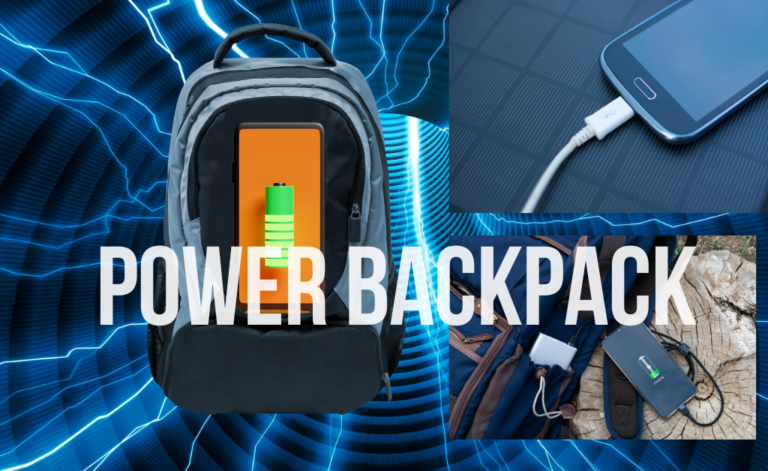Pack Smart, Pack Right: 9 tips to buy a quality Backpack
Introduction:
Whether you’re an avid traveler, an outdoor enthusiast, a student, or a professional on-the-go, a quality backpack is an indispensable companion that can make your daily activities and adventures much more enjoyable and efficient. Investing in the right backpack goes beyond just a fashion statement; it’s about ensuring comfort, durability, and functionality to meet your unique needs.
In this blog post, we’ll delve into valuable 9 tips to buy a quality Backpack that will guide you through the process of selecting the perfect backpack for your lifestyle. From assessing your specific requirements to considering the build quality, we’ll cover all the essential aspects that will empower you to make an informed decision. Let’s embark on this journey to discover the key elements that separate an exceptional backpack from an ordinary one and how you can find the ideal match that ticks all the right boxes.
So, whether you’re planning an exciting adventure, preparing for the upcoming school year, or seeking a reliable companion for your daily commute, these tips will serve as your compass to navigate the vast sea of backpack choices. Let’s begin our quest to find the ultimate backpack that not only carries your belongings but also accompanies you on countless memorable journeys ahead.
Table of Contents
Here are 9 Tips To Buy a Quality Backpack
1. Consider Your Needs and Purpose:
The first and most crucial step in buying a quality backpack is to identify its primary purpose and your specific needs. Different activities and environments demand different features and functionalities. Let’s delve into this step and explore how you can determine the ideal backpack for your unique requirements.
- Assess Your Activities:
- Are you a frequent traveler who needs a backpack that can withstand long journeys and carry all your essentials?
- Are you an outdoor enthusiast planning hiking or camping trips, requiring a rugged and weather-resistant backpack?
- Are you a student in search of a backpack that can hold books, a laptop, and other school supplies comfortably?
- Are you a professional who needs a backpack for daily commuting, complete with organization features for work-related items?
- Consider Your Environment:
- Will you be using the backpack primarily in urban settings, where style and versatility may be important factors?
- Will you be exploring nature and facing various weather conditions, necessitating a backpack with excellent water resistance?
- Will you be carrying fragile items or electronics, requiring additional padding and protective compartments?
- Features to Look for Based on Purpose:
- Travel: Look for backpacks with ample storage capacity, sturdy construction, TSA-friendly laptop compartments, and lockable zippers for security.
- Hiking: Opt for backpacks with ergonomic design, adjustable straps, breathable back panels, hydration compatibility, and multiple attachment points for gear.
- School: Choose backpacks with designated laptop sleeves, multiple pockets for organization, and comfortable padded straps for carrying heavy textbooks.
- Work: Consider backpacks with professional aesthetics, padded compartments for laptops or tablets, and quick-access pockets for essentials like keys and pens.
- Versatility:
- If you’re seeking a backpack that can adapt to various activities, consider a versatile option that combines features from different categories.
By understanding your specific needs and the purpose of the backpack, you can narrow down your options and focus on models that align with your lifestyle. Remember, a backpack tailored to your activities and environment will not only enhance your experience but also ensure that your belongings are safe and easily accessible throughout your journeys.
2. Assess Backpack Size and Capacity:
Selecting the right size and capacity of the backpack is crucial to ensure that it can comfortably accommodate all your belongings without being too bulky or restrictive. Here are some tips to help you determine the ideal size and capacity based on your needs:
- Consider Your Belongings:
- Make a list of items you plan to carry regularly in your backpack. Include essentials such as clothing, electronics, toiletries, books, or any specialized gear required for your activities.
- Determine Volume in Liters:
- Backpack capacity is measured in liters, and it indicates the total volume of the bag. As a general guideline:
- Daypacks: 20 to 30 liters are suitable for daily use, short hikes, or city exploration.
- Weekend Backpacks: 30 to 50 liters can accommodate enough gear for a weekend trip.
- Multi-Day Backpacks: 50 to 70 liters are ideal for longer trips and hiking adventures.
- Expedition Backpacks: 70 liters and above are designed for extended treks or specialized expeditions.
- Backpack capacity is measured in liters, and it indicates the total volume of the bag. As a general guideline:
- Match Your Activities:
- Tailor the size to the nature of your activities. If you frequently engage in overnight camping trips, a larger backpack may be necessary. For daily commuting or light travel, a smaller daypack may suffice.
- Try It On:
- Visit a physical store if possible and try on different backpack sizes with some weight inside. This will give you a better sense of how it feels on your back and shoulders.
- Consider Your Body Size:
- Your height and body frame play a role in determining the right backpack size. Some brands offer different sizes (small, medium, large) to cater to various body types.
- External Attachment Points:
- If you plan to carry additional gear, such as a sleeping bag or a tent, check if the backpack has external attachment points like daisy chains or gear loops.
- Weight Distribution:
- A backpack with a well-designed suspension system and adjustable straps helps distribute the weight evenly, reducing strain on your back.
- Packability:
- Consider whether the backpack has compression straps or side pockets to adjust the size based on your load.
- Future Needs:
- If you anticipate your needs changing in the future, consider a slightly larger backpack that can accommodate additional items.
Remember, choosing the right size and capacity ensures that your backpack is both practical and comfortable to carry. A properly sized backpack will make all the difference in your outdoor adventures, travels, or daily routines, keeping your belongings organized and easily accessible throughout your journeys.
3. Focus on Material and Build Quality:
When it comes to buying a quality backpack, one of the most critical aspects to consider is the material and build quality. These factors directly impact the longevity, weather resistance, and overall durability of the backpack. Let’s explore why high-quality materials and robust construction are essential for a reliable and long-lasting backpack:
- Longevity and Weather Resistance:
- High-Quality Materials: Backpacks made from premium materials, such as durable nylon, Cordura, or ripstop fabrics, are more resistant to wear and tear. These materials can withstand rough handling, abrasions, and exposure to various environments.
- Water Resistance: Look for backpacks with water-resistant or waterproof coatings to protect your belongings from rain, snow, and moisture. This feature is crucial, especially if you’ll be outdoors in unpredictable weather conditions.
- Robust Stitching:
- Reinforced Seams: Quality backpacks have reinforced stitching at stress points, like the shoulder straps, top handle, and attachment points. This prevents seams from unraveling and enhances the backpack’s overall strength.
- Bar Tacks: Bar tacking is a sewing technique used to reinforce critical points where straps and other components are attached. It significantly increases the backpack’s durability and load-bearing capacity.
- Sturdy Zippers:
- Self-Repairing Zippers: Look for backpacks with self-repairing or lockable zippers. These zippers are designed to fix misaligned teeth, preventing potential snags that could lead to zipper failure.
- Weather-Resistant Zippers: Backpacks with weather-resistant zipper flaps or welded seams provide an additional layer of protection against water infiltration.
- Durable Hardware:
- Buckles and Clips: Quality backpacks often feature high-grade plastic or metal buckles and clips that can withstand frequent use without breaking or deforming.
- Compression Straps: Ensure that the compression straps are made from durable materials and have strong buckles to secure and stabilize the load.
- Impact on Comfort and Safety:
- High-quality materials and construction not only enhance the backpack’s durability but also contribute to your comfort. A well-constructed backpack distributes weight evenly, reducing strain on your back and shoulders during extended wear.
- Safety is also a crucial consideration. A backpack with sturdy zippers and durable hardware reduces the risk of unexpected failures that could lead to lost or damaged belongings.
- Investment in Long-Term Use:
- While backpacks with high-quality materials may come with a higher price tag, they are an investment in long-term use. A durable backpack will last for years, providing value for money compared to cheaper alternatives that may need frequent replacements.
In conclusion, prioritizing high-quality materials and robust construction when buying a backpack is essential for longevity, weather resistance, comfort, and safety. A well-built backpack not only withstands the rigors of daily use but also ensures that your belongings remain protected, making it a reliable companion for all your adventures, travels, and daily activities.
4. Comfort and Support Features:
When selecting a quality backpack, comfort should be a top priority, especially if you’ll be carrying it for extended periods during your travels or outdoor activities. Certain comfort and support features can make a significant difference in reducing strain on your body and ensuring an enjoyable experience. Let’s explore these key features and understand how ergonomic designs can enhance your overall comfort:
- Padded Shoulder Straps:
- High-quality backpacks come equipped with padded shoulder straps that cushion your shoulders and distribute the weight of the load evenly. This prevents pressure points and discomfort, even when carrying heavy items.
- Adjustable straps allow you to customize the fit based on your body size and maintain proper alignment.
- Ventilated Back Panels:
- Backpacks with ventilated back panels improve airflow between your back and the backpack. This ventilation helps keep you cool and reduces the buildup of sweat, especially during warm weather or intense physical activities.
- The ergonomic design of back panels ensures that the backpack conforms to the natural curves of your spine, providing excellent support and stability.
- Waist Belts and Sternum Straps:
- Waist belts are commonly found in larger backpacks and hiking packs. They transfer a significant portion of the backpack’s weight from your shoulders to your hips, which are better equipped to carry heavy loads.
- Sternum straps help stabilize the shoulder straps and prevent them from slipping off your shoulders, further enhancing the overall balance and comfort of the backpack.
- Load-Lifting Straps:
- Some backpacks feature load-lifting straps or load adjusters that allow you to fine-tune the position of the backpack in relation to your body. This helps optimize the load distribution and prevents the backpack from pulling you backward.
- Ergonomic Designs and Weight Distribution:
- Ergonomic backpack designs take into consideration the human body’s natural biomechanics. They are shaped and contoured to fit the curves of your back, promoting a more comfortable and snug fit.
- By distributing the weight of the backpack closer to your body’s center of gravity, ergonomic designs reduce strain on your shoulders and lower back, resulting in less fatigue during prolonged use.
- Padding and Support in Key Areas:
- Quality backpacks have padding in critical areas such as the back panel, shoulder straps, and waist belts. This padding not only enhances comfort but also provides extra support and protection for your body.
- Proper Weight Distribution:
- An ergonomic backpack encourages you to pack heavier items closer to your back, while lighter items can be placed towards the front. This optimal weight distribution maintains balance and stability during your activities.
Incorporating these comfort and support features into your backpack selection ensures that you can carry your belongings comfortably for extended periods without experiencing unnecessary strain or discomfort. Whether you’re embarking on an adventure, exploring the city, or commuting to work, a well-designed backpack with ergonomic features will be your reliable companion, allowing you to focus on enjoying the journey ahead.
5. Organizational Features and Compartments:
Having a backpack with well-thought-out organizational features can significantly enhance your daily life, travels, or outdoor adventures. These compartments, pockets, and organizers serve a multitude of purposes, from keeping your belongings tidy and easily accessible to providing specialized storage for specific items. Let’s explore the benefits of these features in more detail:
- Easy Access to Essentials:
- Quick-Access Pockets: Exterior pockets on the front or sides of the backpack allow you to reach for essential items like your phone, wallet, or keys without having to open the main compartment.
- Top Lid Pockets: Some backpacks have a convenient top lid pocket that provides easy access to frequently used items or small valuables.
- Laptop and Tablet Storage:
- Dedicated Laptop Compartment: A padded and secure compartment designed specifically for laptops ensures that your device remains protected during transport.
- Tablet Sleeve: Similar to laptop compartments, tablet sleeves provide a safe and easily accessible spot for your tablet or e-reader.
- Organization for Small Items:
- Internal Mesh Pockets: Mesh pockets inside the main compartment keep smaller items like charging cables, pens, and sunglasses organized and visible.
- Zippered Pockets: Multiple zippered compartments enable you to sort items based on usage or categories, preventing them from getting jumbled together.
- Separate Shoe Compartment:
- Some backpacks, especially those designed for travel or sports, feature a separate shoe compartment that isolates dirty or wet footwear from the rest of your belongings.
- Hydration System Compatibility:
- Hydration Sleeve: Backpacks designed for outdoor activities often include a dedicated hydration sleeve or pocket that accommodates a water reservoir or water bottle, allowing you to stay hydrated without stopping to access a bottle.
- Compression Straps and Gear Loops:
- Compression straps help compress the contents of the backpack, making it more compact and stable, particularly when the bag is not fully packed.
- Gear loops provide external attachment points for items like trekking poles, ice axes, or tripods, making them easily accessible without taking up space inside the backpack.
- Internal Dividers:
- Backpacks with removable or adjustable dividers in the main compartment allow you to customize the interior layout based on your specific needs. This feature is particularly useful for photographers or travelers who carry delicate equipment.
- Secure and Hidden Pockets:
- Some backpacks include discreet pockets or hidden compartments to store valuables or important documents, adding an extra layer of security.
Having a backpack with effective organizational features not only keeps your belongings neat and tidy but also saves you time and frustration while searching for specific items. Whether you’re on a hiking trail, exploring a new city, or simply commuting to work, these compartments and organizers make it easy to find what you need when you need it. They turn your backpack into a well-organized and efficient tool, ensuring that you can focus on enjoying your experiences to the fullest.
6. Weight and Portability:
The significance of a lightweight backpack cannot be overstated, particularly for travelers and hikers. Carrying a heavy backpack for extended periods can lead to fatigue, discomfort, and even physical strain. A lightweight backpack offers numerous advantages, making it an essential consideration when selecting the perfect companion for your adventures. Here’s why weight matters and some tips to find the right balance between capacity and weight:
- Ease of Mobility:
- A lightweight backpack allows you to move more freely and comfortably, whether you’re navigating crowded airports, hiking challenging trails, or exploring bustling city streets.
- It reduces the strain on your back, shoulders, and neck, making your journey less tiring and more enjoyable.
- Energy Conservation:
- Carrying less weight on your back means you’ll expend less energy throughout the day, leaving you with more stamina for your activities and experiences.
- In long-distance hiking or multi-day trips, this energy conservation becomes even more crucial to sustain your endurance.
- Airline Weight Restrictions:
- For travelers, a lightweight backpack can help you stay within airline weight restrictions, saving you from excess baggage fees and potential hassles at the airport.
- Versatility and Adaptability:
- A lightweight backpack provides greater flexibility to use it for various purposes and environments. It can transition effortlessly from a daypack for sightseeing to a hiking pack for outdoor adventures.
Tips to Strike a Balance between Capacity and Weight:
- Assess Your Needs:
- Identify the essentials you genuinely need to carry, considering the nature of your trip or activity. Avoid overpacking by eliminating non-essential items.
- Choose the Right Size:
- Determine the ideal backpack size based on your specific requirements. Opt for a backpack that has enough capacity to accommodate your essentials without excessive extra space.
- Consider Multi-Functional Gear:
- Invest in multi-functional gear that serves multiple purposes, reducing the need to carry separate items.
- For example, some travel backpacks can double as daypacks by detaching smaller compartments.
- Pack Smartly and Efficiently:
- Organize your belongings efficiently to maximize space and minimize unnecessary weight.
- Roll clothes instead of folding them to save space and reduce creasing.
- Opt for Lightweight Materials:
- Look for backpacks made from lightweight and durable materials like ripstop nylon or polyester to minimize the overall weight.
- Prioritize Comfort and Ergonomics:
- While seeking a lightweight backpack, ensure that it still provides adequate padding and support for your comfort and safety.
- Test the Backpack:
- If possible, try out the backpack with a typical load to assess how it feels on your back and whether it strikes the right balance between capacity and weight.
Remember, the goal is to find a lightweight backpack that meets your specific needs while still providing enough capacity to carry essential items comfortably. By selecting a backpack that strikes this balance, you can enjoy your travels and outdoor adventures with greater ease and convenience, making every moment more enjoyable and memorable.
7. Brand Reputation and Reviews
Researching the reputation and customer reviews of backpack brands and models is a crucial step in making an informed purchasing decision. It offers valuable insights into the quality, performance, and durability of the backpacks you are considering. Here’s why it’s essential to delve into brand reputation and customer reviews:
- Reliability and Quality:
- Backpack brands with a good reputation are more likely to offer high-quality products. Positive reviews from satisfied customers indicate that the brand consistently delivers on its promises and provides durable and reliable backpacks.
- User Experience:
- Customer reviews provide first-hand experiences from individuals who have used the backpack in real-life scenarios. Learning from others’ experiences can help you understand how the backpack performs in various situations and environments.
- Potential Issues and Limitations:
- Honest reviews often mention any issues or limitations with the backpack. Understanding these aspects allows you to weigh the pros and cons and determine if the backpack aligns with your specific needs.
- Longevity and Durability:
- Reviews that discuss the backpack’s longevity and durability are valuable in assessing whether it can withstand the rigors of your intended use.
- After-Sales Support:
- A brand’s responsiveness to customer queries and complaints is reflected in reviews. This insight can give you confidence in their after-sales support and warranty services.
Suggested Website for Reliable Reviews and Testimonials: Packwander.com
Packwander.com is an excellent website to find reliable reviews and testimonials for various backpack brands and models. This website is dedicated to outdoor gear and travel equipment reviews, including backpacks for various purposes. Here’s why Packwander.com is a great resource:
- Unbiased Reviews: Packwander.com provides unbiased reviews, offering an objective evaluation of the backpacks’ performance and features.
- Extensive Coverage: The website covers a wide range of backpack brands and models, ensuring you can find reviews for backpacks suitable for different activities and preferences.
- User-Generated Content: The platform often features reviews and testimonials from actual users, providing genuine insights into the backpacks’ real-world performance.
- Comparison Tools: Packwander.com may offer comparison tools and rankings, making it easier for you to compare different backpacks and make an informed choice.
- Updated Information: The website is regularly updated with new reviews and product releases, ensuring you access the latest information on the backpacks you are interested in.
Before making your final decision on a backpack purchase, visit Packwander.com to read reviews and testimonials. Utilizing this valuable resource can help you choose a high-quality backpack that meets your needs and expectations, ensuring a satisfying and reliable companion for your adventures and travels.
8. Price vs. Quality:
The relationship between price and quality in backpacks can be complex, as it varies depending on the brand, materials, features, and intended use. While it’s generally true that higher-priced backpacks often offer better quality and durability, it doesn’t mean that all expensive backpacks are the best choice for everyone. Conversely, some affordable options can still provide excellent quality and functionality. Understanding how to navigate this balance can help you find a backpack that fits your budget without compromising on quality.

Guidance on Finding a Quality Backpack within Your Budget:
- Set a Realistic Budget:
- Determine your budget range for the backpack purchase. Be practical and consider the long-term value of the backpack in relation to your needs and intended use.
- Research Trusted Brands and Models:
- Look for reputable backpack brands known for their quality and durability. Research specific models within your price range that have received positive reviews from users and experts.
- Prioritize Your Needs:
- Identify your primary requirements for the backpack. Focus on essential features and functionalities that align with your activities and lifestyle rather than unnecessary extras.
- Consider Lasting Materials:
- Look for backpacks made from durable materials like high-denier nylon or Cordura. These materials often offer better longevity and resistance to wear and tear.
- Assess Essential Features:
- Determine which features are crucial for your intended use. Prioritize comfort, support, and organizational features that will enhance your overall experience.
- Check Warranty and Return Policies:
- Evaluate the warranty offered by the brand to ensure you’re covered in case of any manufacturing defects. Also, check the return policy of the retailer to have peace of mind during your purchase.
- Look for Sales and Discounts:
- Keep an eye out for seasonal sales, special promotions, or discounts offered by retailers or manufacturers. These opportunities can help you get a higher-quality backpack within your budget.
- Consider Older Models:
- Often, the previous versions of popular backpack models are available at a lower price when newer versions are released. These older models can still be excellent choices with slight design differences.
- Read User Reviews:
- Customer reviews and testimonials can offer valuable insights into the quality and performance of the backpack you’re interested in. Look for feedback from people who have used the backpack for a while to gauge its durability.
- Avoid Bargain-Basement Prices:
- Extremely low-priced backpacks may be of questionable quality and might not withstand regular use. Be cautious of overly cheap options that seem too good to be true.
Remember that finding the right balance between price and quality requires careful consideration of your needs, brand reputation, and user feedback. A quality backpack that meets your requirements and budget will be a worthwhile investment, providing comfort, durability, and functionality for your adventures and daily activities.
9. Warranty and Return Policy:
A good warranty and a flexible return policy are essential factors to consider when purchasing a backpack, as they offer peace of mind and protection for your investment. Understanding the value of these policies ensures that you are well-prepared for any potential issues or concerns that may arise with your backpack.
The Value of a Good Warranty:
- Protection against Defects: A manufacturer’s warranty provides assurance that the backpack is free from defects in materials and workmanship. If you encounter any manufacturing issues, the warranty will cover repairs or replacements, typically within a specified time frame.
- Long-Term Investment: A robust warranty reflects the manufacturer’s confidence in the quality and durability of their product. It gives you peace of mind, knowing that the backpack is designed to withstand regular use for an extended period.
- Cost Savings: A good warranty saves you money on potential repair costs or the need to buy a new backpack prematurely if any defects arise.
- Trust in the Brand: A strong warranty instills trust in the brand, as it demonstrates their commitment to customer satisfaction and product excellence.
The Value of a Flexible Return Policy:
- Try Before Committing: A flexible return policy allows you to try out the backpack in real-life situations without the fear of being stuck with it if it doesn’t meet your expectations or needs.
- Adjustment Period: Sometimes, you may need time to get accustomed to the backpack’s fit and features. A flexible return policy gives you the chance to make sure the backpack is comfortable and suitable for your intended use.
- Purchase Confidence: Knowing that you can return the backpack if it doesn’t meet your requirements gives you confidence in your purchase decision.
- Risk Reduction: If you purchase a backpack online without physically trying it, a flexible return policy reduces the risk of ending up with a backpack that doesn’t meet your expectations.
Advice to Check Warranty and Return Policy:
Before finalizing your backpack purchase, here’s some advice to ensure you have a good understanding of the warranty and return policy:
- Manufacturer’s Warranty:
- Check the manufacturer’s website or packaging to find details about the warranty period, coverage, and any specific conditions for making a warranty claim.
- Retailer’s Return Policy:
- Verify the retailer’s return policy, especially if you’re buying from an online store. Look for information on the duration within which you can return the backpack and any requirements for the return process.
- Save Documentation:
- Keep all purchase receipts, warranty documents, and any additional paperwork related to the backpack in case you need to make a warranty claim.
By carefully reviewing the warranty and return policy, you can ensure that your investment in a quality backpack is well-protected. These policies provide valuable support in the event of any unforeseen issues and allow you to purchase with confidence, knowing that you have recourse if the backpack doesn’t meet your expectations.
Frequently Ask Questions FAQs
1. How do you know if a backpack is good quality?
You can determine if a backpack is of good quality by considering the following factors:
- Material: High-quality backpacks are often made from durable materials like nylon, Cordura, or ripstop fabric that can withstand wear and tear.
- Construction: Check for reinforced stitching at stress points, sturdy zippers, and robust hardware, indicating a well-constructed backpack.
- Brand Reputation: Research reputable backpack brands known for their reliability and customer satisfaction.
- User Reviews: Read customer reviews to gain insights into the real-life performance and durability of the backpack.
- Warranty: A good warranty provided by the manufacturer is an indication of their confidence in the product’s quality.
2. What to look for when buying a backpack?
When buying a backpack, consider the following key factors:
- Purpose: Determine the primary purpose of the backpack (e.g., travel, hiking, school, work) and choose one that suits your specific needs.
- Size and Capacity: Assess the ideal size and capacity based on the amount of belongings you’ll carry regularly.
- Comfort Features: Look for padded shoulder straps, ventilated back panels, and waist belts for comfort during extended use.
- Organizational Features: Consider various compartments, pockets, and organizers for easy access and organization of your belongings.
- Weight: Choose a lightweight backpack for ease of mobility, especially for travelers and hikers.
- Durability: Prioritize high-quality materials and robust construction for a durable and long-lasting backpack.
3. How much should you pay for a good backpack?
The price of a good backpack varies depending on its brand, size, features, and intended use. Generally, you can find good quality backpacks ranging from $50 to $200 or more. The key is to strike a balance between your budget and the features you require. Investing in a slightly more expensive backpack may provide better durability and functionality, making it a worthwhile long-term investment.
4. How do I choose a comfortable backpack?
To choose a comfortable backpack, consider the following factors:
- Padding: Look for padded shoulder straps, back panels, and waist belts for even weight distribution and reduced pressure on your body.
- Ergonomics: Opt for an ergonomic design that conforms to your back’s natural curves, providing a snug and comfortable fit.
- Adjustability: Choose a backpack with adjustable straps and harnesses to customize the fit to your body size and shape.
- Ventilation: Consider a backpack with a well-ventilated back panel to promote airflow and reduce sweat buildup.
- Weight Distribution: Ensure that the backpack’s weight is evenly distributed and close to your body’s center of gravity for better balance and comfort.
Conclusion:
When it comes to buying a quality backpack, making an informed decision is essential for comfort, durability, and functionality during your travels, outdoor adventures, or daily commutes. Here’s a summary of the ten valuable tips to help you find the perfect backpack:
- Consider Your Needs and Purpose: Identify the primary purpose of the backpack and the specific features you require based on your activities and environment.
- Assess Backpack Size and Capacity: Determine the ideal size and capacity based on your needs, striking a balance between accommodating your belongings comfortably and minimizing weight.
- Focus on Material and Build Quality: Prioritize high-quality materials and robust construction for longevity, weather resistance, and overall durability.
- Comfort and Support Features: Look for padded shoulder straps, ventilated back panels, and waist belts for enhanced comfort during extended use.
- Organizational Features and Compartments: Opt for various compartments, pockets, and organizers for easy access and tidiness of your belongings.
- Weight and Portability: Choose a lightweight backpack for ease of mobility and energy conservation, especially for travelers and hikers.
- Brand Reputation and Reviews: Research the reputation and customer reviews of backpack brands and models to ensure reliability and customer satisfaction.
- Price vs. Quality: Consider the relationship between price and quality, focusing on finding a backpack that fits your budget without compromising on essential features.
- Warranty and Return Policy: Prioritize backpacks with a good warranty and a flexible return policy for peace of mind and protection of your investment.
- Invest Wisely: Remind yourself that investing in a high-quality backpack is a decision that pays off in the long run. A reliable and durable backpack will accompany you on countless journeys and daily adventures, providing comfort and functionality for years to come.
I encourage you to use this guide as a reference while making your backpack purchase. Evaluate your needs, preferences, and the specific activities you’ll be engaging in to find the perfect backpack that aligns with your lifestyle. Remember, a quality backpack is not merely a purchase; it’s an investment in your comfort, convenience, and enjoyment during all your future travels and outdoor experiences. With a well-chosen backpack, you’ll have a reliable companion by your side, making every adventure more enjoyable and memorable.







